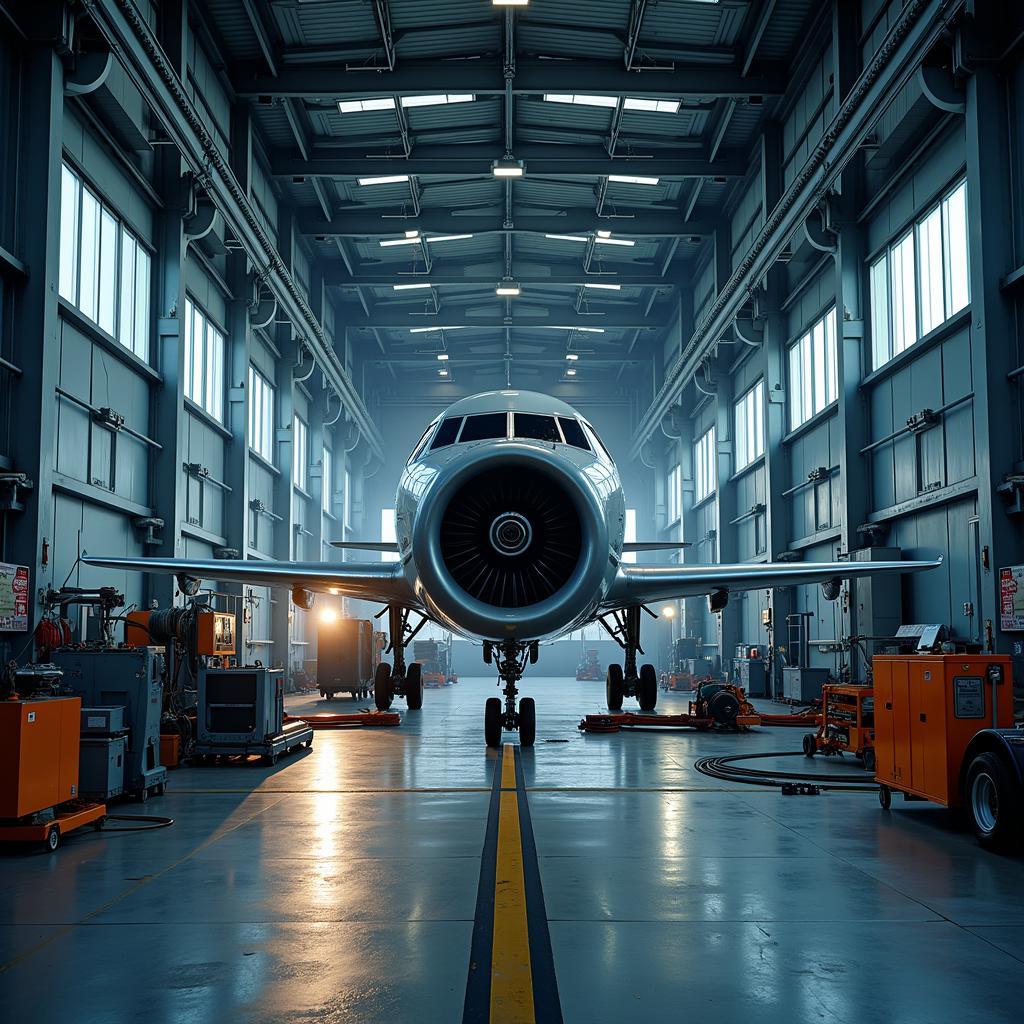Jet engines are the heart of modern aviation, playing a pivotal role in airport operations, from powering aircraft for takeoff and landing to influencing airport design and infrastructure. Their impact extends beyond simply enabling flight; they are a critical component in the complex choreography of a busy airport.
The Power Behind Flight: How Jet Engines Facilitate Airport Operations
Jet engines are the driving force behind air travel, enabling the movement of millions of passengers and tons of cargo daily. Their power and efficiency are crucial for maintaining the tight schedules and high traffic volumes typical of modern auckland international airport. Their reliability ensures the smooth flow of operations, minimizing delays and disruptions. Without these powerful engines, the interconnected global network we rely on would simply not exist.
Impact on Airport Design and Infrastructure
The sheer power of jet engines has a significant impact on airport design. Runway length and strength, taxiway layout, and even terminal building placement are all influenced by the operational requirements of jet-powered aircraft. 2 runway airports uses their design to optimize the flow of aircraft propelled by jet engines, maximizing efficiency and minimizing delays. Noise pollution, a significant concern around airports, is also directly linked to jet engine operation, leading to the development of noise abatement procedures and quieter engine technologies.
Jet Engine Maintenance and its Role in Airport Operations
Maintaining these complex machines is a critical aspect of airport operations. Dedicated maintenance facilities, highly trained technicians, and strict adherence to safety regulations are essential for ensuring the airworthiness of every aircraft that departs. Regular inspections, repairs, and overhauls contribute significantly to flight safety and minimize the risk of delays caused by mechanical issues. The smooth running of an airport is inextricably linked to the meticulous care and maintenance of its jet engines.
What are the key functions of a jet engine in airport operations?
Jet engines primarily provide thrust for aircraft takeoff, enabling them to reach the necessary speeds for flight. They also power the aircraft during taxiing, although some airports are exploring alternative, more sustainable taxiing solutions. Furthermore, reverse thrust from jet engines aids in braking during landing, shortening the required runway length and increasing safety margins.
How do different types of jet engines influence airport operations?
Different types of jet engines, such as turbofans, turbojets, and turboprops, have varying performance characteristics that influence airport operations. For instance, turbofans are quieter and more fuel-efficient, making them suitable for busy airports in densely populated areas. The specific type of engine used by an aircraft dictates the necessary ground support equipment, maintenance procedures, and even the type of fuel required at the airport.
“The efficiency and reliability of modern jet engines are essential for the smooth operation of any airport,” says Dr. Amelia Wright, a renowned aerospace engineer. “Their impact on everything from airport design to noise reduction strategies is undeniable.”
Ensuring Safety and Efficiency: The Importance of Jet Engine Performance
The performance of jet engines is paramount for safe and efficient airport operations. Factors like thrust, fuel efficiency, and noise levels all play a crucial role in optimizing aircraft performance and minimizing environmental impact. airport meaning encompasses much more than just a place where planes land and take off; it’s a complex ecosystem where the performance of jet engines is integral to its overall success. Any malfunction in a jet engine can have serious repercussions, highlighting the importance of stringent maintenance protocols and rigorous safety checks.
silchar airport photo could provide a glimpse into the integration of jet engine operations within a specific airport environment.
“Regular maintenance and rigorous testing are non-negotiable when it comes to jet engine safety,” adds Captain David Lee, a veteran pilot with over 20 years of experience. “These procedures are fundamental to maintaining the high levels of safety and reliability we expect in aviation.”
Conclusion: The Indispensable Role of Jet Engines
Jet engines are indispensable to modern airport operations, impacting everything from airport design and infrastructure to safety protocols and environmental considerations. Their role extends far beyond simply powering aircraft; they are a critical element in the complex web of activities that keep airports running smoothly and efficiently. Understanding the about role in jet engines in airport operations is essential for appreciating the complexity and sophistication of the modern aviation industry.
 Jet Engine in Airport Operations
Jet Engine in Airport Operations
FAQs
- How do jet engines impact airport noise levels?
- What are the different types of jet engines used in commercial aviation?
- How does jet engine maintenance contribute to airport safety?
- What is the role of jet engines in aircraft takeoff and landing?
- How do jet engines influence airport design and infrastructure?
- What are the key performance indicators for jet engines in airport operations?
- What are the future trends in jet engine technology and their potential impact on airports?
Commonly Asked Situations
- Delayed Flight Due to Engine Trouble: This is a frequent scenario where passengers might wonder about the specific engine issue causing the delay. Providing information about common jet engine problems and their impact on flight schedules can be helpful.
- Noise Complaints Near Airports: Addressing concerns regarding noise pollution from jet engines and explaining the measures taken by airports to mitigate it can alleviate community anxieties.
- Curiosity about Different Aircraft Types: Passengers often express interest in the types of aircraft they are flying on, including the specific engines used. Offering details about different jet engine models and their characteristics can enhance the passenger experience.
Further Exploration
You can find further information on airport facilities by exploring our article on 6509 airport road mississauga l4v1s7.
Need assistance? Contact us 24/7: Phone: +13089626264, Email: news.bbi@gmail.com or visit us at 404 Bothwell St, Oxford, NE 68967, USA.
